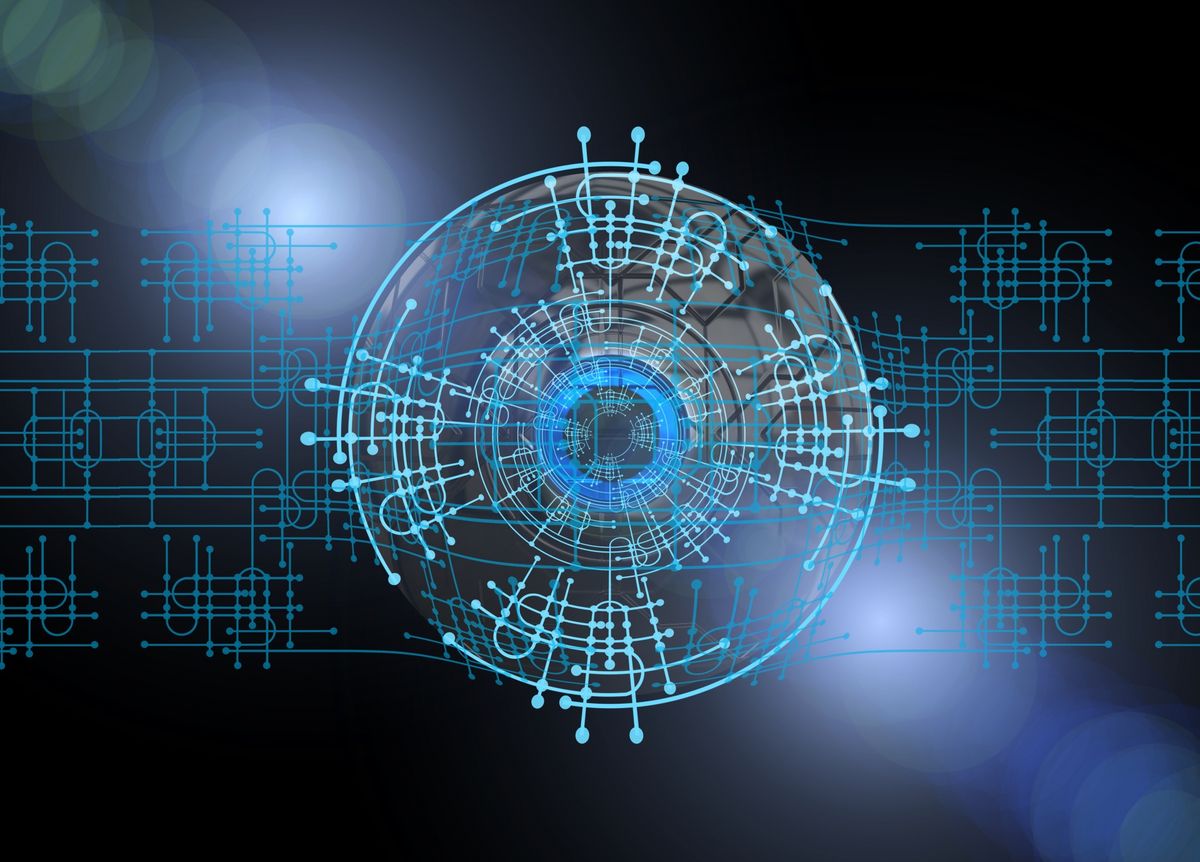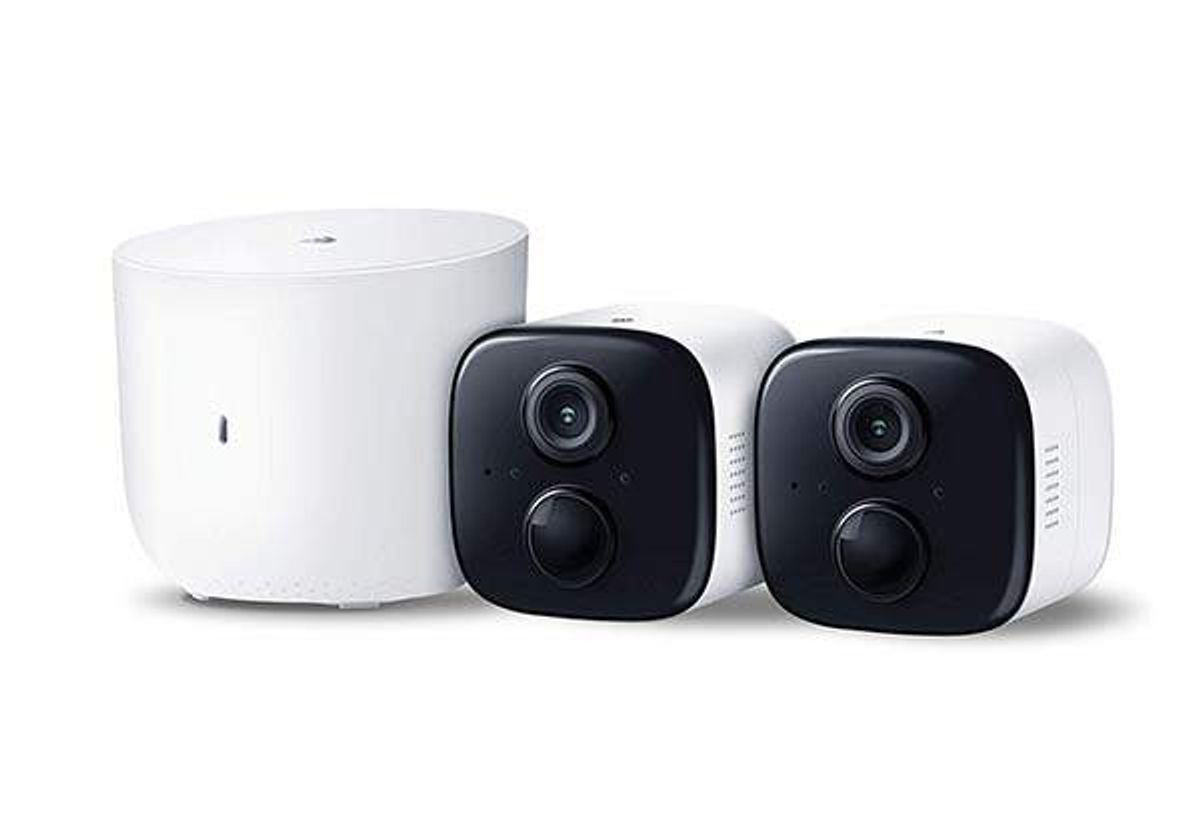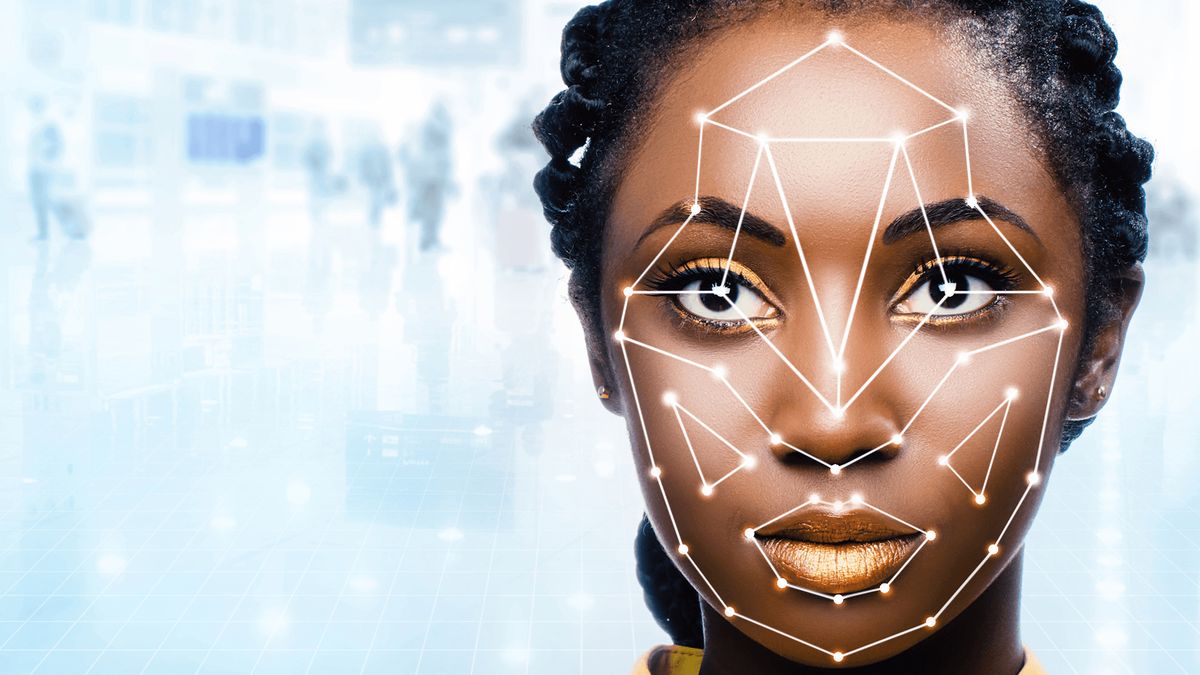In the evolving landscape of security, the integration of Artificial Intelligence (AI) has become a game-changer for protecting homes, businesses, and public spaces. AI-driven solutions offer advanced capabilities in surveillance, threat detection, and emergency response, enhancing the effectiveness and efficiency of security systems. This article delves into the various ways AI is shaping the security sector, highlighting key innovations and discussing the implications for privacy and ethics.
Key Takeaways
- AI integration into security systems significantly improves surveillance, detection, and response to threats in homes, businesses, and public areas.
- Smart AI technologies enable proactive security measures, such as predictive threat analysis and automated emergency protocols, leading to quicker and more effective incident resolution.
- The use of AI in security raises important privacy concerns, necessitating the development of solutions that balance safety with respect for individual rights.
- Wearable AI devices are emerging as a personal security trend, offering users immediate assistance and integrating health monitoring with security features.
- The future of AI in security is promising, with ongoing advancements posing both opportunities and ethical challenges that must be carefully managed.
Integrating AI into Home Security Systems

Smart Surveillance: Beyond Traditional Cameras
The evolution of home security has taken a significant leap with the integration of artificial intelligence. AI-powered surveillance systems are no longer confined to passive recording; they actively analyze footage in real-time, identifying potential threats with remarkable accuracy. These systems can distinguish between routine movements and unusual activity, triggering alerts only when necessary, thus reducing false alarms and enhancing overall security.
AI-driven cameras are equipped with advanced features such as facial recognition, object detection, and unusual behavior analysis, which enable them to provide a more comprehensive security solution compared to traditional cameras.
Modern smart surveillance devices also offer enhanced connectivity options. For instance, certain AI-powered Lorex cameras we tested offer not only power and battery flexibility but also seamless Wi-Fi connectivity and cloud-based video storage. This allows for remote monitoring and control via smart platforms, ensuring that homeowners can stay vigilant even when away from their property.
Here's a quick comparison of key features between traditional and AI-enabled cameras:
The integration of AI into home security systems is not just about advanced technology; it's about providing peace of mind through smarter, more responsive surveillance solutions.
AI-Enabled Alarm Systems: Proactive Threat Detection
The advent of AI-enabled alarm systems marks a significant shift from reactive to proactive security measures. These systems are designed to anticipate and identify potential threats before they materialize, using sophisticated algorithms and machine learning techniques. By analyzing patterns and anomalies in data, AI can trigger alerts for unusual activities, offering homeowners and businesses an advanced layer of protection.
- Real-time monitoring: Continuous analysis of environmental data to detect irregularities.
- Predictive analytics: Leveraging historical data to foresee and alert about potential threats.
- Automated response: Immediate action can be taken by the system, such as locking doors or notifying authorities.
The integration of AI in alarm systems is not just about immediate responses but also about learning from past incidents to enhance future security protocols. This proactive approach enhances security and minimizes the risk of potential threats, making it an invaluable asset in both home and business environments.
Home Automation and AI: A Symbiotic Relationship
The integration of AI into home automation systems has created a symbiotic relationship that enhances both convenience and security for homeowners. AI-driven devices can learn from user behavior, optimizing home settings for energy efficiency and comfort while also providing robust security solutions.
- Smart thermostats adjust temperature based on your routine.
- AI-powered lighting systems deter intruders by simulating occupancy.
- Voice-activated assistants manage security settings with simple commands.
The true potential of AI in home automation lies in its ability to adapt and respond to the unique needs of each household, creating a tailored environment that is both secure and efficient.
As AI technology continues to evolve, the possibilities for home automation expand, promising a future where homes are not only smart but also intuitively aligned with the lifestyles and safety requirements of their inhabitants.
Privacy Concerns and Solutions in AI Home Security
The integration of AI into home security systems has raised significant privacy concerns. Breaches of data privacy are a critical issue, as AI systems often require large datasets for training and decision-making. This can lead to the inadvertent exposure of sensitive personal information. Moreover, the potential for algorithmic bias and discrimination poses a risk of unfair treatment or surveillance.
To address these challenges, a multi-faceted approach is necessary. Here are some key solutions:
- Implementing strict data governance policies to ensure that personal data is handled responsibly.
- Developing transparent AI algorithms to minimize bias and ensure fairness.
- Regular privacy audits of AI systems to identify and mitigate potential vulnerabilities.
- Enhancing encryption methods to protect data from unauthorized access.
It is imperative for manufacturers and service providers to prioritize privacy by design, embedding robust security features into AI home security products from the outset.
AI Innovations in Business Security Management

Advanced Intrusion Detection Systems
The advent of AI-powered intrusion detection systems (IDS) has revolutionized the way businesses protect their digital assets. By integrating machine learning algorithms, these systems can analyze patterns and detect anomalies that signify potential threats. This results in a significant reduction of false positives, while simultaneously increasing the accuracy of true positive detections.
- Real-time monitoring: AI systems provide continuous surveillance, identifying threats as they occur.
- Behavioral analysis: Machine learning models learn normal network behavior and flag deviations.
- Automated response: Upon detection, systems can initiate protocols to mitigate risks.
AI-powered threat detection and machine learning both hold a lot of promise for reducing false positives and increasing true positives. This proactive approach not only enhances security but also optimizes the response time to potential threats, ensuring that businesses can maintain continuity and protect their reputation.
AI for Access Control and Identity Verification
The integration of AI into access control and identity verification systems has revolutionized the way businesses secure their premises. AI-driven systems are now capable of analyzing vast amounts of data to recognize patterns and anomalies, enhancing security measures significantly.
- Biometric Authentication: AI algorithms can process biometric data such as fingerprints, facial recognition, and iris scans with high accuracy.
- Behavioral Analysis: Systems can learn and remember typical user behavior, flagging any actions that deviate from the norm.
- Continuous Authentication: AI allows for ongoing verification of a user's identity, even after initial access has been granted.
AI not only strengthens security but also streamlines the user experience by reducing friction during the verification process.
The implementation of AI in these systems has led to a reduction in unauthorized access and an increase in overall operational efficiency. As AI technology continues to evolve, we can expect even more sophisticated access control and identity verification solutions.
Cybersecurity: Machine Learning in Threat Intelligence
The integration of Machine Learning (ML) in cybersecurity has marked a significant shift in how organizations approach threat intelligence. ML algorithms excel at analyzing vast amounts of data to identify patterns and anomalies that may indicate a cyber threat. This capability allows for a more proactive and predictive security posture, rather than a reactive one.
- Real-time threat detection: ML can process and analyze data at a speed unattainable by human analysts, enabling real-time threat identification.
- Pattern recognition: By learning from historical data, ML can recognize malicious patterns and predict potential future attacks.
- Automated response: Once a threat is detected, ML can help automate the response, reducing the time between detection and mitigation.
The use of ML in cybersecurity is not just about technology; it's about transforming the security paradigm from a traditional, defensive approach to a more dynamic, intelligent strategy.
The promise of ML in redefining and modernizing traditional cybersecurity methods, including threat intelligence, is evident. As ML continues to evolve, it will become an indispensable tool in the arsenal against cyber threats.
Data Protection: AI's Role in Information Security
In the realm of information security, AI plays a pivotal role in safeguarding data from unauthorized access and cyber threats. By utilizing machine learning algorithms, AI systems can detect anomalies and potential breaches more efficiently than traditional methods.
AI-driven security measures are continuously evolving, becoming more sophisticated and integral to protecting sensitive information.
AI tools are employed in various aspects of data protection, including:
- Monitoring network traffic for unusual patterns
- Identifying vulnerabilities in software and hardware
- Automating the response to security incidents
- Enhancing encryption methods to secure data transmission
The integration of AI into data protection strategies not only improves the accuracy of threat detection but also reduces the response time, enabling a more proactive defense against cyber attacks.
The Role of AI in Public Safety and Surveillance

Urban Security: AI for Smart City Surveillance
The integration of AI into urban security systems is transforming the landscape of smart city surveillance. AI-driven technologies are enhancing the efficiency and accuracy of monitoring urban environments, leading to safer and more secure cities. These systems are capable of analyzing vast amounts of data from various sources, including CCTV footage, to detect anomalies and potential threats in real-time.
- Real-time threat detection: AI algorithms can identify unusual activities or behaviors, triggering alerts for immediate response.
- Traffic management: Smart surveillance helps in managing traffic flow and detecting incidents like traffic jams or collisions.
- Public safety: Enhanced monitoring of public spaces contributes to the prevention of crimes and quicker emergency responses.
The potential of AI in urban security is immense, offering a proactive approach to managing safety in densely populated areas. By leveraging advanced analytics and machine learning, cities can anticipate and mitigate risks before they escalate.
The application of AI surveillance technology, such as that provided by icetana, is a testament to the growing reliance on intelligent systems for urban security. Their software is designed to oversee the movement of people and vehicles, helping to identify traffic jams, collisions, or unusual behaviors on urban streets.
Crowd Management and Incident Prediction
The integration of AI into public safety has revolutionized crowd management and incident prediction. AI provides the ability to process and analyze vast quantities of data from multiple sources in real-time, aiding threat assessment and strategic planning. This capability is crucial during large public events where the potential for incidents is heightened.
AI systems can predict hotspots for potential incidents by analyzing patterns from past events, social media activity, and real-time video feeds. This predictive power allows for preemptive action to ensure safety. For instance, authorities can adjust crowd control measures or redirect foot traffic to mitigate risks.
The use of AI in public safety is a game-changer, enabling a proactive approach to incident management and crowd control.
The table below outlines the benefits of AI in crowd management and incident prediction:
Facial Recognition Technology: Balancing Safety and Ethics
The rapid advancement of facial recognition technology has sparked a global debate on its implications for privacy and civil liberties. While the technology offers unparalleled benefits for security and identification, it also raises significant ethical concerns. The crux of the issue lies in the potential for misuse and the lack of comprehensive legislation to regulate its application.
- Privacy Invasion: The pervasive use of facial recognition can lead to unwarranted surveillance, affecting individuals' right to privacy.
- Bias and Discrimination: Inherent biases in AI algorithms can result in discriminatory practices, disproportionately affecting certain demographic groups.
- Accountability: Establishing clear accountability for errors or misuse of the technology is challenging, often leaving victims without recourse.
The balance between ensuring public safety and protecting individual rights is delicate. Policymakers and technology developers must work together to create frameworks that safeguard ethical standards while harnessing the technology's potential for good.
AI-Powered Emergency Response Systems
AI-powered emergency response systems are revolutionizing the way we handle crises by providing faster, more accurate, and efficient reactions to emergencies. These systems can analyze vast amounts of data in real-time, identifying patterns that may indicate an imminent threat or emergency situation. By doing so, they enable a proactive approach to disaster management and public safety.
- Real-time threat detection: AI algorithms monitor various data sources to identify potential emergencies.
- Automated alerts: Systems send out warnings to relevant authorities and the public, ensuring rapid dissemination of critical information.
- Resource allocation: AI helps in optimizing the deployment of emergency services and resources.
- Post-event analysis: After an incident, AI can assist in analyzing the response and improving future protocols.
The integration of AI into emergency response systems promises to enhance the resilience of communities against natural disasters, accidents, and other unforeseen events. It's not just about responding to emergencies; it's about anticipating them and mitigating their impact before they escalate.
Enhancing Personal Security with Wearable AI Devices

Smart Wearables for Emergency Assistance
The evolution of wearable technology has brought about a new era in personal security. Wearable AI devices now offer emergency assistance with features designed to detect accidents, falls, and other emergencies, promptly notifying emergency services or predefined contacts. These devices often include GPS tracking, allowing for precise location monitoring in times of need.
Wearable medical alert systems have become increasingly sophisticated, incorporating cellular service and GPS technology to maintain a constant connection to emergency call centers. This ensures that individuals can receive help even when they are away from home. For example, the latest devices on the market offer a range of functionalities:
- Fall detection
- Heart rate monitoring
- Real-time location sharing
- Two-way communication
The integration of these features into everyday wearables has significantly improved the ability to provide immediate assistance during critical situations, enhancing the safety and peace of mind for users.
As the technology continues to advance, we can expect to see even more innovative solutions aimed at safeguarding individuals. The best medical alert systems of 2024 have been expertly tested and reviewed, highlighting the importance of reliability and ease of use in these life-saving gadgets.
Fitness Trackers with Security Features
The evolution of fitness trackers has transcended mere activity monitoring. Modern devices now incorporate advanced security features, enhancing the personal safety of users. For instance, some trackers offer 'Safety Check' and 'Safety Signal' functionalities. Safety Check acts as a proactive timer that, upon expiration without user deactivation, alerts designated emergency contacts to the user's location and potential distress.
These integrated safety features represent a significant step forward in wearable technology, offering peace of mind and an added layer of protection for individuals during their daily activities or in potentially hazardous situations.
While the primary function of these wearables remains health and fitness tracking, the integration of security elements has broadened their appeal. Users can now benefit from a dual-purpose device that not only assists in achieving fitness goals but also ensures their well-being in emergencies.
The Future of Personal Security Gadgets
As we look towards the future, the landscape of personal security gadgets is poised to evolve with increasing sophistication and integration. The advancements in wearable technology are expected to bring about a new era of devices that not only enhance personal safety but also offer unprecedented levels of personalization and healthcare integration.
The convergence of security features with health monitoring tools signifies a transformative leap in wearable tech. Users will benefit from gadgets that are not just reactive but also proactive in maintaining their well-being.
The integration of AI into these gadgets will likely lead to more intuitive and responsive devices. For instance, we can anticipate wearables that adapt to our routines, learn from our behaviors, and provide tailored alerts and recommendations. The following list outlines some of the anticipated developments in personal security gadgets:
- Enhanced biometric security measures
- Real-time health and location tracking
- Predictive analytics for potential threats
- Seamless connectivity with smart home systems
These innovations, reflective of the future of wearable technology, are set to redefine our approach to personal security, making it more dynamic and user-centric.
Integrating AI with Personal Health Monitoring
The integration of AI into personal health monitoring is transforming the landscape of wearable technology. AI is integrated into wearable devices through machine learning algorithms that analyze data collected by sensors. These algorithms can identify patterns and provide insights into an individual's health status, potentially alerting them to health issues before they become serious concerns.
Wearable AI devices are becoming increasingly sophisticated, offering a range of features that cater to both health and security needs. For instance, some devices now come equipped with fall detection, emergency SOS signals, and location tracking, which can be crucial for the elderly or those with medical conditions.
The convergence of AI and health monitoring in wearables represents a significant step forward in personal healthcare. It empowers individuals to take a more proactive approach to their well-being, with real-time data and analytics at their fingertips.
While the benefits are clear, it is important to address the privacy and security implications of such devices. Ensuring that personal data is protected and used ethically is paramount as we continue to embrace these AI-driven health tools.
AI in Security: Trends, Challenges, and Future Outlook

Emerging Trends in AI-Driven Security Solutions
The landscape of AI-driven security is constantly evolving, with new trends emerging that promise to enhance protection for individuals and organizations alike. One of the most significant trends is the advanced use of AI and machine learning solutions in security systems, which are becoming increasingly sophisticated in detecting and responding to threats.
- Advanced AI and machine learning
- Integration of security sensors
- Adoption of facial recognition technology
These technologies are not only transforming home security but are also being integrated into business and public safety systems. The integration of security sensors and facial recognition technology is particularly noteworthy, as they offer more precise and efficient ways to monitor and secure environments.
The convergence of AI with other technologies is leading to the creation of smarter, more responsive security solutions that are capable of adapting to new threats as they arise.
As these technologies continue to develop, we can expect to see even more innovative applications that will push the boundaries of what is possible in security.
Overcoming Challenges in AI Implementation
Implementing AI in security systems presents a unique set of challenges that must be addressed to fully harness its potential. Key difficulties in artificial intelligence development and implementation include inaccuracy, cybersecurity concerns, and risks of intellectual property theft. These hurdles can impede the progress and effectiveness of AI-driven security solutions.
To overcome these challenges, a multifaceted approach is essential. It involves not only improving the accuracy of AI algorithms but also fortifying the cybersecurity measures to protect against potential breaches and intellectual property risks.
Here are some steps that can be taken to address these challenges:
- Conducting thorough testing and validation to enhance the accuracy of AI models.
- Implementing robust cybersecurity protocols to safeguard AI systems.
- Establishing clear guidelines for intellectual property rights in AI development.
- Investing in continuous research and development to stay ahead of emerging threats.
By tackling these issues head-on, organizations can ensure that their AI implementations are secure, reliable, and effective in the long term.
Ethical Considerations in AI Security
The integration of AI into security measures brings forth a complex array of ethical considerations. Transparency in AI operations is crucial, as it allows users to understand and trust the technology they rely on for their safety. Equally important is the need for accountability; when AI systems make decisions, especially those with significant consequences, it's vital to have clear lines of responsibility.
The ethical deployment of AI in security must balance the benefits of advanced technology with the protection of individual privacy rights.
Privacy is another cornerstone of ethical AI use. AI systems often require access to sensitive data to function effectively, raising concerns about how this data is used and protected. The following list outlines key ethical principles that should guide the development and implementation of AI in security:
- Respect for privacy and data protection
- Ensuring fairness and avoiding bias
- Maintaining user control and consent
- Implementing robust security measures to safeguard AI systems themselves
Addressing these ethical dilemmas is not just about adhering to regulations; it's about building trust with the public and ensuring that AI contributes positively to society.
Predicting the Future of AI in Security
As we look towards the horizon of security technology, the role of AI is not only expanding but also becoming more sophisticated. Advanced NLP (Natural Language Processing), autonomous systems, and even the potential of quantum computing are shaping the future landscape of AI in security. These technologies promise to enhance the capabilities of security systems, making them more intuitive and effective at threat detection and response.
The integration of AI into security is expected to yield a range of benefits, from improved accuracy in surveillance to more nuanced access control. However, the journey ahead is not without its challenges. Ensuring the ethical use of AI, maintaining privacy, and overcoming technical hurdles will be critical to the successful adoption of these technologies.
The evolution of AI in security points towards a future where systems are not just reactive, but predictive, capable of anticipating threats before they materialize.
To encapsulate the trajectory of AI in security, consider the following points:
- Advanced NLP will enable systems to understand and process human language more effectively, leading to better communication between humans and security AI.
- Autonomous systems will become more prevalent, taking on tasks that are currently manual, reducing human error and increasing efficiency.
- The advent of quantum computing could revolutionize encryption and data protection, making security measures exponentially more robust.
Conclusion
In conclusion, the integration of AI-driven solutions into home and business security systems represents a significant advancement in protective measures. These intelligent systems offer unparalleled efficiency, accuracy, and convenience, elevating security to new heights. By leveraging the power of artificial intelligence, homeowners and businesses can now enjoy a more robust defense against intrusions, theft, and other security breaches. The future of security is undeniably intertwined with AI technology, promising a safer and more secure environment for all.
Frequently Asked Questions
How is AI transforming home security systems?
AI is revolutionizing home security by enabling smart surveillance with real-time threat detection, AI-enabled alarm systems that can proactively identify risks, and home automation that works symbiotically with security features to enhance safety and convenience.
What are the benefits of AI in business security management?
AI enhances business security through advanced intrusion detection systems, improved access control and identity verification, machine learning for cybersecurity threat intelligence, and robust data protection mechanisms.
How does AI contribute to public safety and surveillance?
AI contributes to public safety by supporting smart city surveillance, crowd management, incident prediction, facial recognition technology, and AI-powered emergency response systems, making urban environments safer.
What role do wearable AI devices play in personal security?
Wearable AI devices offer emergency assistance, integrate security features into fitness trackers, and represent the future of personal security gadgets, including their integration with personal health monitoring systems.
What are the emerging trends in AI-driven security solutions?
Emerging trends include the use of AI for predictive analytics in security, the integration of AI with IoT devices for smarter security ecosystems, and the development of more sophisticated AI algorithms for real-time threat assessment and response.
What challenges do AI security solutions face?
Challenges include ensuring the privacy and ethical use of AI, dealing with the complexity of integrating AI into existing security infrastructures, and managing the potential for AI systems to be exploited by malicious actors.



